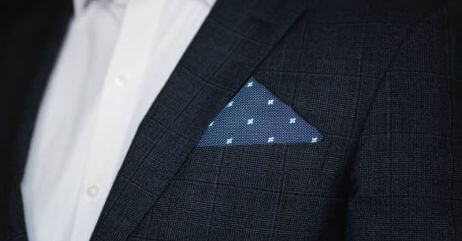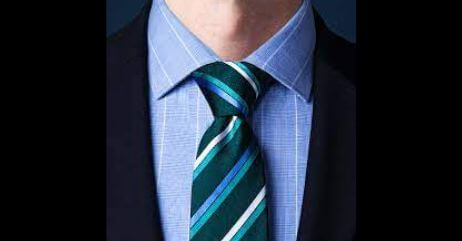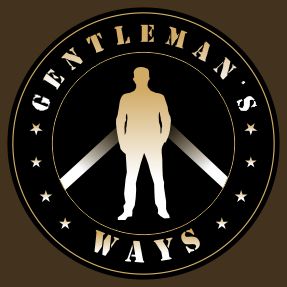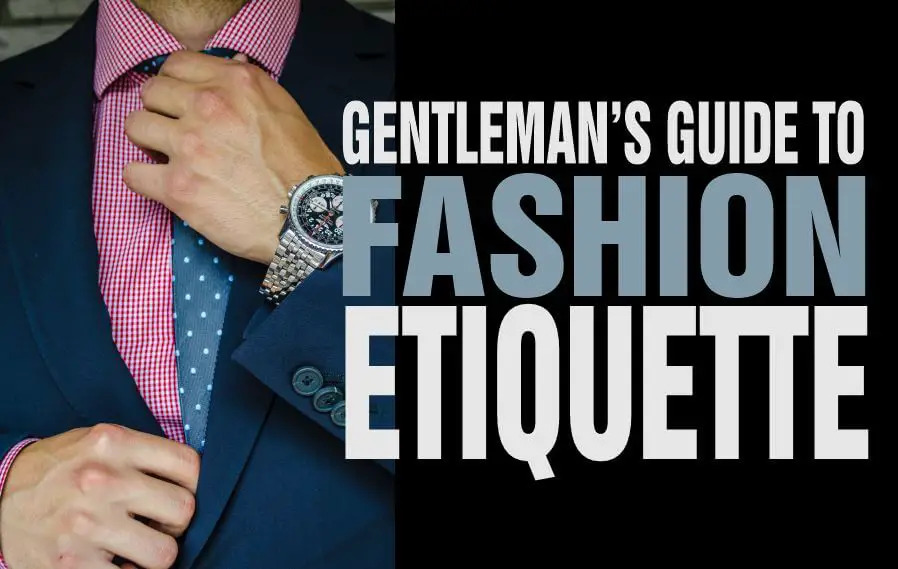Dress with confidence and purpose. This guide to the gentleman’s fashion etiquette breaks down the rules of style, fit, and occasion, helping you make a strong and lasting impression.
Gentleman’s fashion etiquette is one of the lifestyles gentlemen don’t play with. It is an avenue for men to express another side of their creativity.
The way you dress sends a message before you even speak. Whether you’re at a business meeting, wedding, or casual gathering, your clothing choices influence how others perceive you, and how you feel about yourself.
Men’s fashion etiquette is knowing what to wear, when to wear it, and how to pull it off with confidence.
A well-chosen outfit shows respect for yourself and those around you. From getting the right fit to matching colors and dressing for different occasions, understanding these rules helps you avoid fashion mistakes and always look polished.
This guide breaks down the basics of men’s fashion etiquette so you can build a wardrobe that works for every situation while staying true to your style.

Related: Men’s Fashion and Style for Beginners
Table of Contents
- What is Gentleman’s Fashion Etiquette?
- Choosing the Right Fit
- Collar and Tie Combinations
- Dressing for Different Occasions
- Accessories and Details That Matter
- Caring for Your Wardrobe
- Building a Wardrobe That Works for Every Occasion
- Bringing It All Together
- Frequently Asked Questions
- Conclusion
What is Gentleman’s Fashion Etiquette?
Gentleman’s Fashion Etiquette is about dressing with purpose and respect. It’s knowing what to wear, when to wear it, and how to wear it well. The right fit, clean lines, and proper grooming matter more than following trends.
Whether you’re at work, a wedding, or a casual meetup, your outfit should match the occasion and reflect confidence.
A sharp appearance isn’t about expensive brands, it’s about attention to detail. Well-fitted clothes, polished shoes, and a neat presentation show respect for yourself and those around you.
When you dress with intention, you leave a lasting impression without saying a word.
Choosing the Right Fit

The way your clothes fit makes or breaks your look. A well-fitted outfit isn’t just about style, it affects how you move, how comfortable you feel, and how others perceive you.
Clothes that fit well create a clean, sharp appearance, while anything too tight or too loose can throw off your entire look.
Why Fit Matters
Fit is everything in gentleman’s fashion etiquette. A suit that sits right on your shoulders, a shirt that doesn’t billow at the waist, and trousers that have the right break can make a strong impression.
Baggy clothes can make you look sloppy, while overly tight ones can be uncomfortable and restrictive.
How to Get the Perfect Fit
You don’t need a custom wardrobe, but small adjustments can make a big difference. A tailor can refine the length of your sleeves, taper your pants, or adjust your jacket for a sharper silhouette.
Even casual clothes, like jeans and t-shirts, should complement your body shape rather than overwhelm it.
Before buying anything, pay attention to how it sits on your body. If something doesn’t fit right off the rack, consider alterations.
The right fit isn’t about following trends—it’s about looking put-together and feeling confident in your clothes.
Recommended: Men’s Capsule Wardrobe Essentials
Collar and Tie Combinations
Your collar and tie choices say a lot about your style. Picking the right combination helps you look sharp and suited for the occasion.
Whether you’re dressing for a formal event, a business setting, or a casual outing, knowing how to match your collar with your tie makes all the difference.
Formal and Business Attire
For professional settings, weddings, or formal events, go with a spread or point collar. These styles frame a tie neatly, creating a clean and structured look.
A Windsor or half-Windsor knot works best for these collars, giving your outfit a polished finish. Stick to classic silk ties in solid colors or subtle patterns for a professional appearance.
Semi-Formal and Business Casual
If the dress code is more relaxed but still professional, a button-down collar is a solid choice.
It works well with knit ties or textured fabrics, adding a bit of character without looking too stiff.
This is a great option for office settings that don’t require a full suit but still call for a professional look.
Casual and Smart Casual
When the occasion is casual, you can skip the tie altogether. A camp collar or small spread collar works well for a laid-back yet stylish look.
Pair it with chinos or well-fitted jeans for an effortless appearance. If you want to wear a tie, go for a looser knot with a lightweight fabric, like linen or cotton, to keep things relaxed.
Recommended: Complete Guide to Men’s Suit
Dressing for Different Occasions

Knowing how to dress for each occasion shows respect for yourself and those around you.
Every setting has an unspoken dress code, and following it helps you make the right impression without feeling out of place.
Formal Events
For black-tie events, a well-fitted tuxedo is the standard. A classic black tux with a crisp white dress shirt and a black bow tie keeps things elegant.
Cufflinks and a pocket square add a personal touch without overdoing it. Stick to quality fabrics that keep you comfortable while looking sharp.
Business and Professional Settings
A tailored suit is your go-to for work meetings and corporate events. Navy and charcoal suits paired with a light-colored dress shirt and a matching tie create a clean, professional look.
Make sure your suit fits well, your shoes are polished, and your accessories—like a watch or belt, are subtle and coordinated. Dark leather shoes complete the outfit.
Smart-Casual and Social Gatherings
For casual outings that still require some polish, go for well-fitted chinos or dark jeans paired with a tailored blazer.
A button-down or polo shirt keeps it stylish without being too formal. Keep accessories minimal and let your outfit speak for itself.
Accessories and Details That Matter
Your outfit isn’t complete without the right accessories. These small details show your attention to style and can set you apart. The key is choosing quality pieces that complement your look without overpowering it.
Shoes and Belts
Your shoes say a lot about you. Whether you’re in a formal setting or a casual gathering, they should be clean, well-maintained, and suited to the occasion.
Leather dress shoes work best for business and black-tie events, while loafers or clean sneakers fit relaxed settings.
A matching belt pulls everything together. For formal wear, stick to a leather belt that matches your shoes in both color and finish.
Casual outfits allow for more flexibility, with options like woven or canvas belts that add texture without clashing.
Watches and Other Accessories
A well-chosen watch adds personality to your look. A leather-strap watch pairs well with suits, while a metal or sports watch suits casual wear.
Keep it simple, your watch should enhance your outfit, not compete with it.
Other accessories, like pocket squares, cufflinks, or tie bars, add polish when used in moderation. Stick to pieces that complement your outfit rather than draw too much attention.
Caring for Your Wardrobe
Taking care of your clothes keeps you looking sharp and extends the life of your wardrobe.
It’s not just about washing and ironing, it’s about knowing how different fabrics react to water, heat, and storage.
Washing and Ironing
Every fabric needs a different approach. Cotton shirts hold up well with regular washing, but always check the label for specific instructions.
Cold water and a gentle cycle help prevent fading or shrinking. A steam iron will keep them looking crisp.
Wool suits and sweaters need extra care. Hand wash or dry clean to maintain their shape.
Never wring out wool, press out excess water and lay it flat to dry. When ironing, use a pressing cloth to avoid damaging the fabric.
Synthetic fabrics like polyester are easier to manage. Machine wash with warm water, but take them out of the dryer immediately to prevent wrinkles. Use a low heat setting when ironing.
Proper Storage
How you store your clothes matters. Hang suits and dress shirts on sturdy hangers to keep their shape.
Fold knitwear instead of hanging it to avoid stretching. Shoes should be kept in a cool, dry place, and leather pairs benefit from regular polishing.
Suggested: Fashion Tips for Senior Men
Building a Wardrobe That Works for Every Occasion

A well-thought-out wardrobe gives you the flexibility to dress appropriately for any event.
The key is selecting staple pieces that you can mix and match without overcomplicating your style.
The Foundation: A Classic Suit
Every man needs at least one well-fitted suit in a neutral color like navy, gray, or black.
This single piece can take you from business meetings to weddings with a simple change of shirt and tie.
A quality suit should fit well in the shoulders and waist—getting it tailored ensures you always look polished.
Everyday Essentials
Casual wear doesn’t mean sloppy. Well-fitted button-downs, polo shirts, and solid-colored t-shirts give you plenty of options.
Stick to versatile colors like white, navy, and gray, which pair easily with chinos or jeans.
Outerwear That Complements Your Look
Jackets aren’t just for cold weather, they complete an outfit. A trench coat or tailored overcoat works for dressier occasions, while a bomber or denim jacket adds style to casual outfits. Choose quality fabrics that provide comfort and durability.
Recommended: Different Types of Men’s Shoes
Bringing It All Together
How you dress says a lot about you before you even speak. Your clothing reflects your personality, values, and attention to detail.
By following the principles of men’s fashion etiquette, you create a polished image that leaves a lasting impression in both social and professional settings.
Dress with Purpose
Fashion etiquette goes beyond just picking out clothes. It’s about choosing the right fit, coordinating colors, and dressing appropriately for every occasion.
A well-tailored suit shows professionalism, while a well-put-together casual look can make you stand out in social settings.
Every choice you make sends a message, whether it’s in the boardroom, at a wedding, or during a night out.
Know Your Style
Finding what suits you best isn’t about following every trend, it’s about understanding what works for your body type, lifestyle, and personality.
When you dress in a way that complements you, confidence follows naturally. Observing how others dress and adapting ideas that align with your style helps you refine your look over time.
Respect the Dress Code
Whether it’s a formal event, a business meeting, or a casual gathering, knowing and respecting dress codes shows awareness and consideration.
It tells people that you understand the occasion and value the effort others put into their appearance.
Fashion etiquette isn’t about strict rules, it’s about dressing with intention. When you put thought into what you wear, you present yourself well, command respect, and carry yourself with confidence.
Recommended: How to Style Men’s Denim Jackets
Frequently Asked Questions
What is the dress code for a gentleman?
The dress code for a gentleman varies depending on the occasion and setting, but generally, it involves wearing smart and tailored clothing, such as suits or blazers, dress shirts, and appropriate footwear.
What is the smart dress code for men?
The smart dress code for men typically involves wearing formal attire like suits, dress shirts, ties, and polished shoes. It emphasizes a clean and professional appearance.
What is the etiquette of fashion?
The etiquette of fashion refers to the norms and standards of dressing appropriately for different occasions. It includes considerations like dressing for the occasion, considering cultural or religious sensitivities, and expressing personal style with class and respect.
How a gentleman should dress casually?
When dressing casually, a gentleman should aim for a relaxed yet put-together look. This may include well-fitted jeans or chinos, paired with a button-down shirt or a casual blazer. Opting for clean and polished footwear completes the casual yet sophisticated attire.
Conclusion
In the pursuit of mastering the art of gentlemanly dressing, you must recognize the interplay of style, confidence, and etiquette.
This guide has illuminated the foundational elements that define a modern gentleman’s wardrobe, ranging from the choice of attire to the subtleties of fit and occasion.
A gentleman’s style is not solely about wearing the latest fashion; it is about conveying respect for oneself and others through thoughtful clothing choices.
Confidence in your appearance is at the center of expressing the gentlemanly ethos.
References
- https://www.patagonia.com/home/
- https://www.everlane.com/
- https://www.ties.com/how-to-tie-a-tie/half-windsor
- https://www.charlestyrwhitt.com/eu/editorial-style-tips/how-to-tie-a-four-in-hand-knot.html
- https://www.gentlemanwithin.com/types-of-dress-shoes/
Pyo Merez is a men’s lifestyle enthusiast and writer about the gentleman’s place and impact on society. Raised by a distinguished gentleman dad, he offers unique insights into how the mind of a gentleman works and how societal norms shape gentlemen’s identity and vice versa.
Through his insightful articles, Pyo taps into the depths of gentleman culture to provide perspectives on etiquette and manners in modern society.

